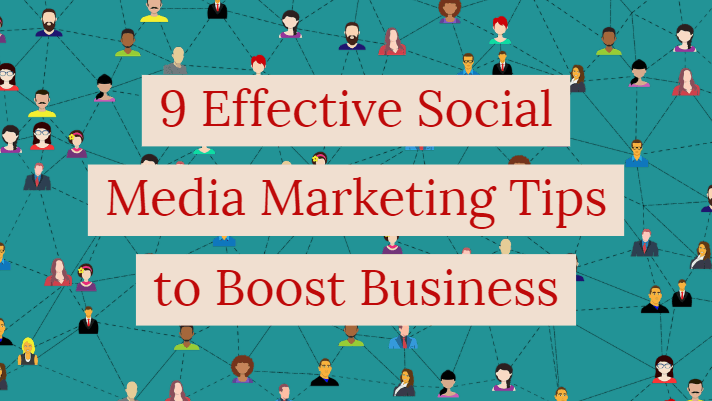
A while back we began noticing a drop in our social media activity. As experts, we know that social media is a crucial part of any digital marketing plan. We were on the right social channels but were not getting the results we had expected.
We identified the problem and it simply came down to not delegating enough time to run an effective marketing campaign.
There is no one to blame. Social media marketing has always been seen as a smaller part of the whole digital marketing picture.
However, whether you are a small business or a big corporation, having an effective social media marketing plan is key to unlocking loads of potential new business.
So, what is social media marketing exactly?
In the broadest definition, social media marketing is an effort to spread brand awareness or promote your company’s products or services through social networks.
We understood the importance of creating social media campaigns and maintaining an online presence, but we seemed to be lacking the key factors that contribute to an effective social media strategy.
We went back to the drawing board to isolate the problem and through trial and error we came up with nine effective social media marketing tips that in turn began facilitating the results we had originally envisioned.
1.) Learn Social Media
There is a science behind how to effectively use social media for marketing and it requires taking the time to learn about the platforms you are on.
Most platforms at their core serve the same purpose of sharing content and connecting people around the world. However, although they share the same fundamentals, knowing each platform’s niche will better help you adjust your campaign, the content you post and your overall goal for each platform.
2.) Know What Social Media Platforms are Best for Your Business
Many experts believe that for the biggest return on your investment, your company should be present on all social media platforms.
Although we agree, each platform is different, and one could yield better results over another.
Tying into learning social media, you need to identify what platforms are best for your industry.
Take for example a landscaping company.
A landscaping company would want to focus their social media marketing campaign more on platforms like LinkedIn rather than platforms such as Instagram.
This is because LinkedIn is more for B2B where Instagram is more B2C. Audiences take to LinkedIn to find professional services, where Instagram is better for more visually appealing products or services.
This concept applies across all platforms, which is why your business needs to find the right social media channel for your industry.

3.) Analyze Your Current Social Media Presence
Before implementing your next social media campaign, analyze your current social media presence. This includes the following:
- What platforms you currently have an account or business page for.
- Update all content and social profile assets such as images, business summaries, headlines, videos, bios, etc.
- Compile and examine your current followers.
- Identify which platform you received the most engagement on or what brings the most value.
- Identify what content performed best.
Everything you find above will contribute to creating your next social media campaign by isolating what platform is best, who your audience is, what content facilitates the most engagement and where you need to improve.
4.) Post Shareworthy Content
Posting about your services or products won’t cut it. Shareworthy content is your golden ticket for creating engagement and increasing brand awareness.
Shareworthy content can come in the form of video, images, infographics, blogs, interviews, etc. Referring back to analyzing your current online presence can help you isolate what form of content would be best to focus your efforts on.
Some characteristics of shareworthy content include:
- Positivity
- Humorous
- Informative
- Authentic
5.) Invest in a Social Media Management Tool
Social media often times is either brushed off entirely by a company or delegated to an intern or temp. What companies don’t realize is that by doing this, they are jeopardizing the overall goal of running a social media campaign in the first place.
Automating your social postings or investing in a social media management tool is how to avoid the consequences of neglecting the work that needs to be put into the campaign.
Most social media platforms already have a built-in management system, such as Facebook Business Manager, that can provide you with all the necessary tools you need to stay on top of your campaign.
By automating your social media postings, you can delegate a certain time to create and schedule all your postings and then letting it ride out through the remainder of the campaign cycle.
At the campaign’s conclusion, social media management tools will compile all the data you need to measure the results in one place.
6.) Listen to Your Audience
A surefire way for creating the best content is to listen to your customers. It is a way to identify what an audience likes or wants to know.
You can do this by reading their comments and seeing what other content they share or like. The buyer persona is seen through their online voice.
Social media should also be seen as an extension of your customer service and a way to answer the questions your customers are asking.
This all goes back to the classic saying “the customer always knows best.”

7.) Engage with Your Audience
Listening to your audience is only half the battle. Sure, you can take tip number 6 and pump out the best and most engaging content left and right, but for complete customer satisfaction and to have the best results for your social media marketing campaign, you need to get down to a personal level.
People love when companies engage with them on social media.
As part of your social media marketing plan, you need to delegate time to respond to not just your target audience, but all customers interacting with your social profile.
Wendy’s twitter account is a clear example of the success that can come from implementing this. Wendy’s Twitter account first came to popularity when they responded to a customer’s request of a lifetime supply of chicken nuggets.
When Wendy’s responded to his request on twitter, the tweet went viral in a matter of days. Thus, creating the sensation that is Wendy’s Twitter account. And not only do they interact with customers, but they also have playful interactions with other company profiles such as Burger King and McDonald’s.
Engaging with your audience is key to building relationships with your potential customers and increasing your brand awareness.
8.) Track Your Data
Whether it is by hand or by automation, you need to have a method for tracking data during the social media campaign’s duration.
Each step of your social media campaign needs to be analyzed and recorded. The most important pieces of data you should be tracking are:
- Overall traffic.
- Overall engagement including likes, shares, reactions, etc.
- Audience interests and behaviors.
- Audience demographic.
- What content performed best.
- Times and dates when posts performed best.
- Amount of conversions made.
- Actions that took place on your business profile or page.
All this data will help you measure the overall success of your social media campaign. It as well will allow you to alter and optimize your efforts for the next time you run a social media campaign.
9.) Optimize and Alter Your Social Media Content
Now that you have come to the conclusion of your campaign, it is time to alter and optimize for your next campaign.
Social media can be more trial and error when you first start out. However, after a couple of months, you will have enough data that includes everything from when the best time to post all the way to the type of content that creates the most engagement.
Alter and optimize your campaign each month with the results measured by your previous campaign. Pretty soon you will have an effective social media marketing strategy that will boost your business.



